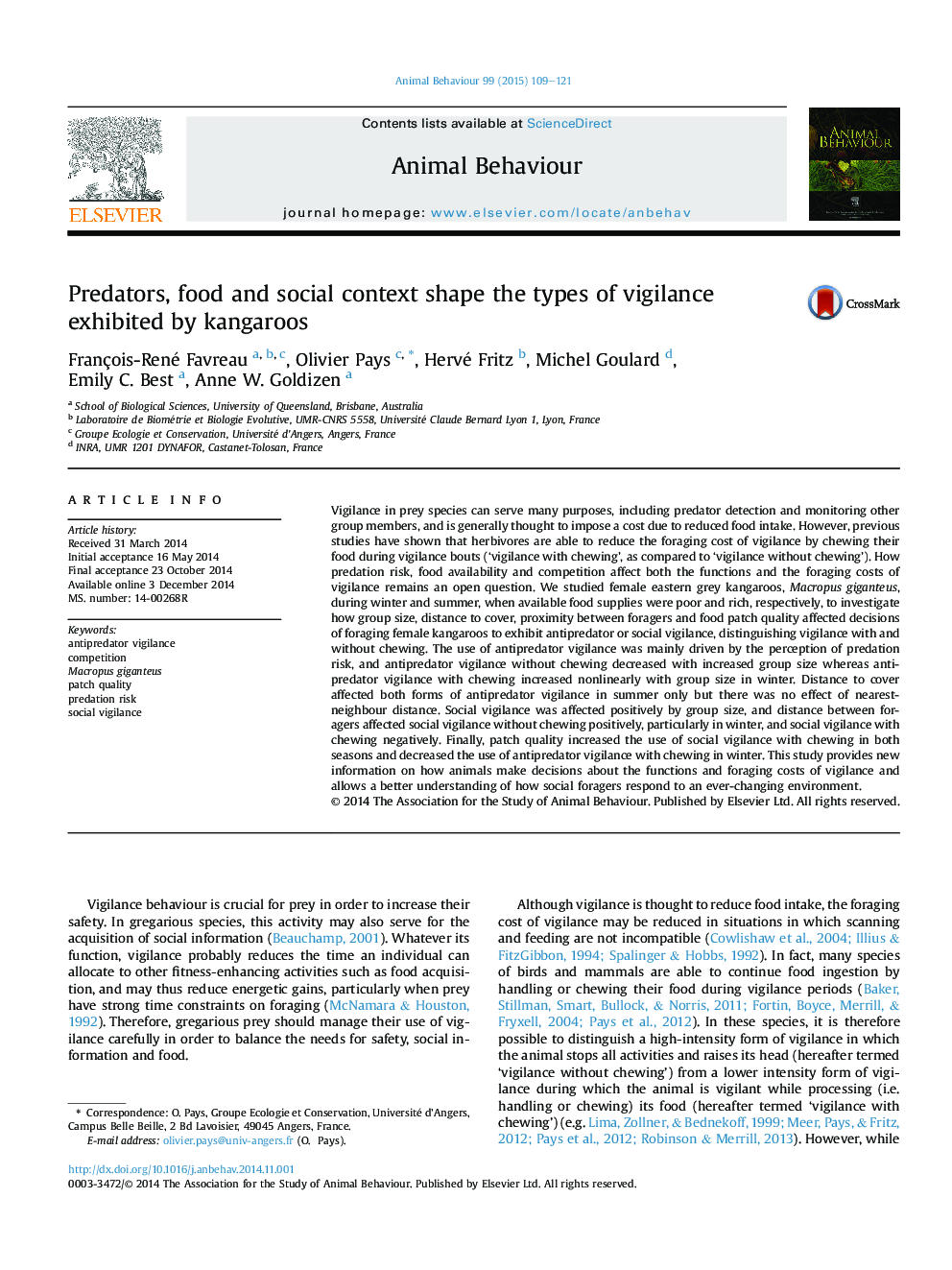| کد مقاله | کد نشریه | سال انتشار | مقاله انگلیسی | نسخه تمام متن |
|---|---|---|---|---|
| 8490215 | 1552229 | 2015 | 13 صفحه PDF | دانلود رایگان |
عنوان انگلیسی مقاله ISI
Predators, food and social context shape the types of vigilance exhibited by kangaroos
دانلود مقاله + سفارش ترجمه
دانلود مقاله ISI انگلیسی
رایگان برای ایرانیان
کلمات کلیدی
موضوعات مرتبط
علوم زیستی و بیوفناوری
علوم کشاورزی و بیولوژیک
علوم دامی و جانورشناسی
پیش نمایش صفحه اول مقاله

چکیده انگلیسی
Vigilance in prey species can serve many purposes, including predator detection and monitoring other group members, and is generally thought to impose a cost due to reduced food intake. However, previous studies have shown that herbivores are able to reduce the foraging cost of vigilance by chewing their food during vigilance bouts ('vigilance with chewing', as compared to 'vigilance without chewing'). How predation risk, food availability and competition affect both the functions and the foraging costs of vigilance remains an open question. We studied female eastern grey kangaroos, Macropus giganteus, during winter and summer, when available food supplies were poor and rich, respectively, to investigate how group size, distance to cover, proximity between foragers and food patch quality affected decisions of foraging female kangaroos to exhibit antipredator or social vigilance, distinguishing vigilance with and without chewing. The use of antipredator vigilance was mainly driven by the perception of predation risk, and antipredator vigilance without chewing decreased with increased group size whereas antipredator vigilance with chewing increased nonlinearly with group size in winter. Distance to cover affected both forms of antipredator vigilance in summer only but there was no effect of nearest-neighbour distance. Social vigilance was affected positively by group size, and distance between foragers affected social vigilance without chewing positively, particularly in winter, and social vigilance with chewing negatively. Finally, patch quality increased the use of social vigilance with chewing in both seasons and decreased the use of antipredator vigilance with chewing in winter. This study provides new information on how animals make decisions about the functions and foraging costs of vigilance and allows a better understanding of how social foragers respond to an ever-changing environment.
ناشر
Database: Elsevier - ScienceDirect (ساینس دایرکت)
Journal: Animal Behaviour - Volume 99, January 2015, Pages 109-121
Journal: Animal Behaviour - Volume 99, January 2015, Pages 109-121
نویسندگان
François-René Favreau, Olivier Pays, Hervé Fritz, Michel Goulard, Emily C. Best, Anne W. Goldizen,